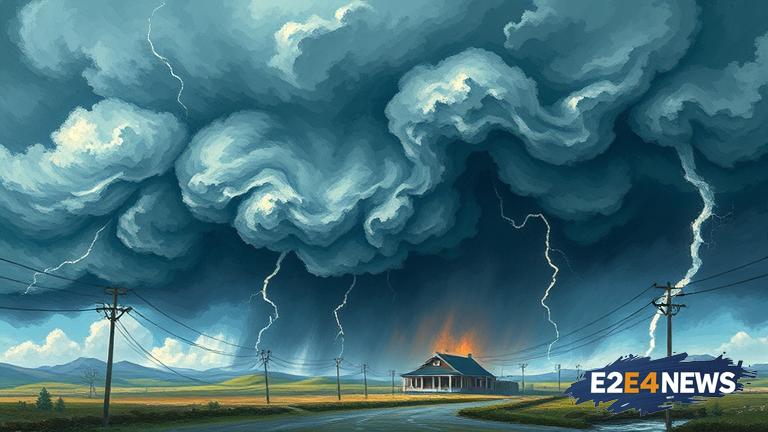In recent years, the phenomenon of storm chasing has gained significant attention, with many individuals and companies seeking to capitalize on the destructive power of natural disasters. These storm chasers are not just thrill-seekers, but also entrepreneurs looking to turn a profit from the chaos. From selling storm-related merchandise to offering disaster relief services, the opportunities for financial gain are vast. However, this trend has raised concerns about the ethics and safety of storm chasing. Some argue that it is irresponsible and disrespectful to profit from the suffering of others, while others see it as a legitimate way to make a living. The rise of social media has also played a significant role in the growth of storm chasing, with many chasers using platforms like Instagram and YouTube to document their adventures and build a following. This has created a sense of celebrity around storm chasing, with some chasers becoming minor celebrities in their own right. Despite the risks, many storm chasers are drawn to the thrill and excitement of the job, as well as the potential for financial reward. Some storm chasers are also motivated by a desire to help others, whether by providing critical information during a disaster or by offering support to those affected. However, the line between helping and exploiting can be blurry, and some critics argue that storm chasers are more focused on making a profit than on providing genuine assistance. The issue of safety is also a major concern, as storm chasers often put themselves in harm’s way to get close to the action. This can not only put their own lives at risk but also the lives of others, including emergency responders and the general public. Furthermore, the increasing popularity of storm chasing has led to a rise in amateur chasers, who may not have the necessary training or experience to navigate dangerous weather conditions. This has resulted in a number of close calls and accidents, highlighting the need for greater regulation and oversight of the storm chasing industry. In addition to the safety concerns, there are also environmental implications to consider. The growing demand for storm-related merchandise and services has led to an increase in waste and pollution, as well as the destruction of natural habitats. Moreover, the focus on storm chasing has diverted attention away from more pressing issues, such as climate change and disaster prevention. Despite these concerns, the storm chasing industry is likely to continue growing, driven by the public’s fascination with extreme weather events. As the industry evolves, it is essential to establish clear guidelines and regulations to ensure that storm chasers are operating safely and responsibly. This may involve implementing stricter safety protocols, providing training and certification programs for chasers, and promoting more sustainable and environmentally-friendly practices. Ultimately, the key to a successful and responsible storm chasing industry lies in finding a balance between the thrill of the chase and the need to prioritize safety, ethics, and environmental sustainability. The future of storm chasing will depend on the ability of chasers, regulators, and the public to work together to create a more responsible and sustainable industry. With the increasing frequency and severity of natural disasters, the demand for storm chasing services is likely to continue growing. As a result, it is essential to address the concerns surrounding the industry and work towards creating a more responsible and sustainable model for storm chasing. By doing so, we can ensure that the thrill of the chase does not come at the expense of safety, ethics, and the environment. The storm chasing industry has the potential to provide valuable services and support to those affected by natural disasters, but it must do so in a responsible and sustainable manner. The public’s fascination with extreme weather events is unlikely to fade, and the industry must adapt to meet the growing demand while prioritizing safety and ethics. In conclusion, the storm chasing industry is a complex and multifaceted phenomenon that raises important questions about ethics, safety, and sustainability. As the industry continues to evolve, it is essential to address these concerns and work towards creating a more responsible and sustainable model for storm chasing.





